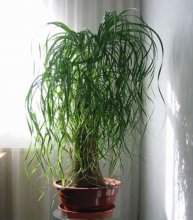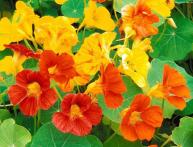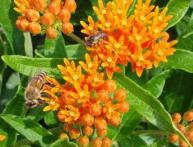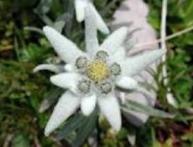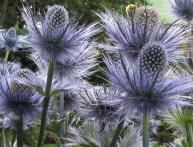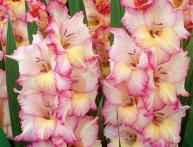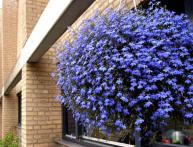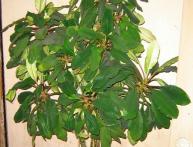Caring for a beautiful bocarney plant
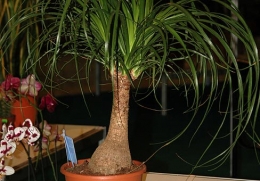
Beaucarneya is a real piece of the jungle right in your home. This is a beautiful and at the same time completely easy to care for and unpretentious plant, the appearance of which immediately hints at the tropical origin of this flower.
In many ways it looks like a miniature, herbaceous little palm tree. But cases have been recorded when the plant grew more than 2 meters.
Content:
Features of care
Bocarnea or nolina loves the sun, so it is better to place it on the south or southwest side of the room.
Due to the fact that its homeland is the tropics, it can easily tolerate direct rays of the sun and heat. It is best if the room temperature is from 10 to +30 C.
In enclosed spaces, bokarnia grows quite slowly. It can be taken out to the loggia in the summer, placing it where there are no drafts.
Feeding for succulents, it is applied under it from May to October 2 times a month, first with organic fertilizer, then with mineral fertilizer. Fertilizer is poured 2 times less than written in the attached instructions. Fertilizer is added after watering the nolina.
If you see that its leaves have become lethargic and darkening, this means that there is not enough light for bokarna. You need to move it to a more illuminated place. Since nolina loves light very much, it can be additionally illuminated with fluorescent light bulbs.
If you notice that its lower leaves dry out and fall off, this means they are dying.They need to be removed. The roots of the plant grow close to the soil surface.
Because of this, it is best planted in wide, low pots with holes in the bottom. Place drainage at the bottom of the pot. She likes a light soil mixture.
Scientists have proven that for about a year, bocarney feels great without watering, while it consumes the moisture found in the tissues of the trunk. Therefore, water it if the surface of the soil in the pot is dry.
She does not like excess moisture, because of this the bottle shape of her trunk disappears. The longer bokarnia grows, the better it feels without watering.
If you find that the stem has become soft, this means that nolina is dying from excess moisture. You can save it by cutting off the rotten roots, shoots, leaves. Afterwards, the bocarney is transplanted into other dry soil. It is not watered for about a week, and then watered moderately.
And with a lack of moisture, its stem wrinkles and the edges of the leaves dry out. Therefore, when the air in the apartment is dry, you need to wipe the leaves with a damp cloth.
It is necessary to spray the leaves with a spray bottle in the morning or evening. But when spraying, you must not allow moisture to get on the trunk, otherwise it will mold.
In winter, when the temperature in the apartment drops, the plant “hibernates”, so it does not need to be watered. But if the temperature in the apartment is about 20°C or higher, then it is necessary to water it.
Reproduction and recommendations for transplantation
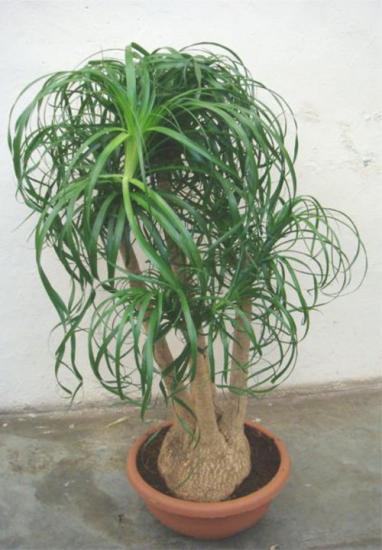
Bocarnia is propagated by seeds or lateral shoots, cuttings.
In February, the seeds should be placed in a weak solution of potassium permanganate for 2 days.
When purchasing, make sure that the seeds are not covered with mold; when placed in water, they should not float, but sink to the bottom. The floating seeds are thrown away.
The soil should be light, air and moisture permeable.
The following composition works well: sand, leaf, turf and peat soils in a ratio of 1:1:2:1. Plant the seeds in moist soil at intervals of 1 cm, not deep, lightly sprinkle the seeds with soil.
The pot is placed under the light, or under a lamp. The room temperature should not be lower than 20?C. The soil should always be moderately moist. Shoots appear after 4 weeks.
To make the seeds grow faster, the pot can be covered with polyethylene or a jar. But it is necessary periodically ventilate the plant, constantly ensure that condensation does not appear on the bag or jar. After 4 months, when the sprouts have grown sufficiently, they can be transplanted one by one into pots.
If under the bark of the plant the buds have swelled, from which side shoots have begun to grow, then you can separate the shoot to plant it. The cut site must be treated with phytohormones that stimulate root growth.
The shoot is planted in the ground at a slight angle. Then cover with film or a jar. The plant is placed in a warm and well-lit place. It needs to be ventilated from time to time. After the roots and leaves grow, remove the film or jar.
If you replant nolina every spring in the spring, it will grow faster. Drainage must be poured into the pot.
Stones are poured into a 3 cm layer at the bottom of the pot with holes. Then a little soil is poured into the cone. The roots of the plant are carefully straightened along the cone, and the base of the trunk is placed on the top of the cone. Then the soil is filled up to the base of the trunk.
Compact the soil and check the stability of the plant. If it is unstable, then line the bottom of the trunk with expanded clay. Nolina is watered 5 days after transplantation.
It is necessary to replant bokarneya annually in a pot that is 3 cm wider than the previous one. If the plant has already grown, then it is replanted after 3 years.
Pests
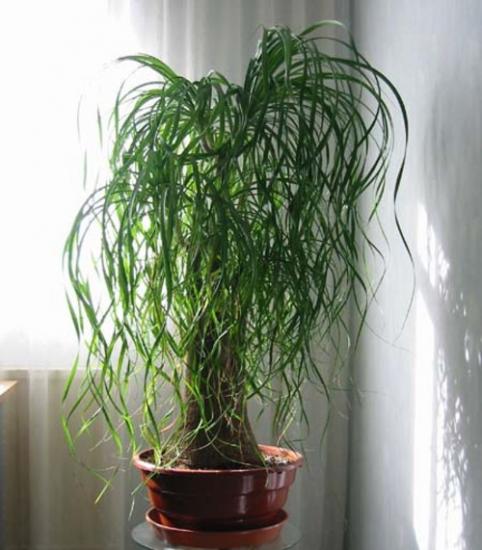
Pests that attack bocarnea are scale insects, thrips, spider mites, and scale insects. The optimal maintenance of the plant so that it is not attacked by pests is systematic wiping of the leaves with a sponge dipped in water and spraying.
Inspect the bocarney daily to notice appearance of pests. If you see small black sticks running around the sidewalk, with 2 pairs of wings folded on the back, then these are thrips. They grow up to 2.5 mm.
If you see yellow spots on the leaves, this means that a spider mite has appeared on the plant. Examine the plant in the light. On the leaves you will find stripes of silver or bronze colors.
If you take a piece of white paper, then place it under the bocarney and then shake the plant, a few spider mites will fall onto the paper. They can be viewed through a magnifying glass.
If mites and thrips are found, they must be removed by treating the plants with an infusion of Dalmatian chamomile, and then with insecticides. If you see small brownish-yellowish tubercles on the leaves, then these are adult female scale insects.
If you find fluffy and white small lumps, then these are scales.
When attacked by scale insects and scale insects, you need to wash them off the leaves with a rag soaked in a solution of soap and tobacco.
Due to the ease of care and the plant’s adaptability to various temperature changes and dry air, flower growers are increasingly beginning to grow bocarney.
Beaucarney in all its glory:
Interesting information about the vegetable garden


